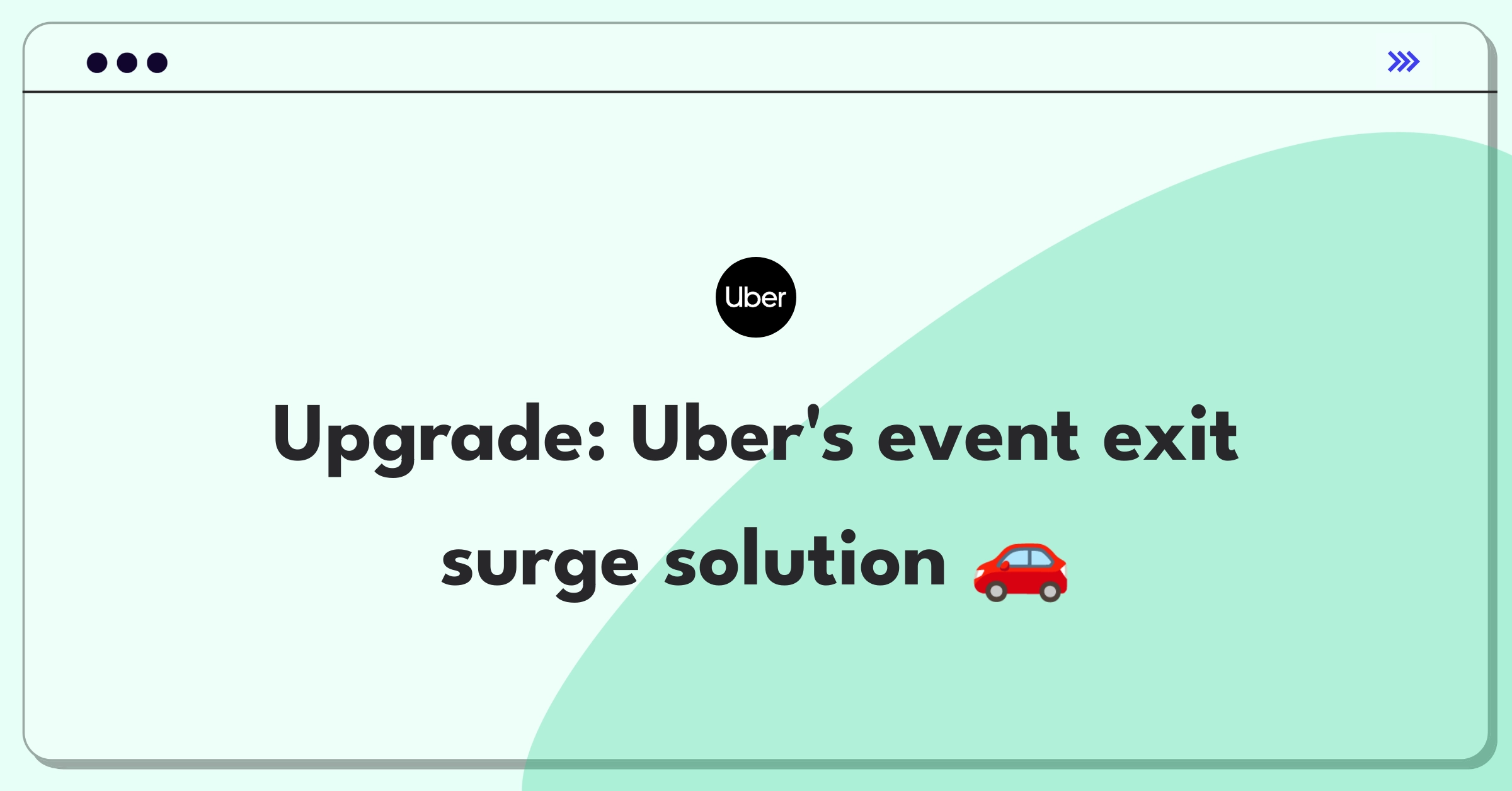Optimizing Uber's Event Exit Experience: Technical Solutions for Demand-Supply Mismatch
To address the demand-supply mismatch during event exits, Uber can implement a multi-faceted technical solution including predictive demand forecasting, dynamic driver incentives, and a smart queueing system, all integrated into a real-time event management platform.
Introduction
The challenge we're facing is a classic demand-supply mismatch problem exacerbated by the sudden influx of ride requests at event conclusions. This issue not only impacts user experience but also affects driver satisfaction and Uber's public image. Our goal is to develop a technical solution that balances these factors while optimizing for scalability and performance.
I'll approach this problem by first clarifying our technical requirements, analyzing the current state, proposing solutions, outlining an implementation roadmap, defining metrics for success, managing risks, and finally, discussing long-term technical strategy.
Tip
Remember that our technical solution must align with Uber's broader business objectives of improving user satisfaction, increasing driver retention, and maintaining a positive public image.
Step 1
Clarify the Technical Requirements (3-4 minutes)
To ensure we're addressing the right technical challenges, I'd like to clarify a few points:
-
"Considering our current event detection system, I'm assuming we have real-time data on event locations and schedules. Can you confirm if we have an API integration with major event venues or if we're relying on third-party data providers?
Why it matters: Determines the reliability and granularity of our event data Expected answer: API integration with major venues, supplemented by third-party data Impact on approach: Would influence our data ingestion and processing architecture"
-
"Looking at our driver-side app architecture, I'm curious about our current capabilities for real-time driver location tracking and status updates. What's the frequency of these updates, and are there any limitations in our current system?
Why it matters: Affects our ability to implement dynamic driver allocation Expected answer: Real-time updates every 5-10 seconds with some scalability issues during peak times Impact on approach: Might require optimizing our location tracking system for high-load scenarios"
-
"Regarding our pricing algorithm, I understand surge pricing hasn't been effective. Can you provide insights into its current implementation? Are we using machine learning models, and if so, what type of data are we feeding into them?
Why it matters: Helps determine if we need to refine existing algorithms or develop new pricing strategies Expected answer: ML-based model using historical data and real-time demand, but lacking granular event-specific factors Impact on approach: Could lead to developing a more sophisticated, event-aware pricing model"
-
"Considering our backend infrastructure, what's our current capacity for handling sudden spikes in ride requests? Are we using auto-scaling solutions, and if so, on which cloud platform?
Why it matters: Determines our system's ability to handle event-related traffic surges Expected answer: AWS-based auto-scaling with some latency during extreme peaks Impact on approach: Might necessitate optimizing our auto-scaling policies or exploring multi-cloud solutions"
Tip
Based on these clarifications, I'll assume we have a solid foundation for event data and real-time tracking, but there's room for improvement in our pricing algorithms and backend scalability.
Subscribe to access the full answer
Monthly Plan
The perfect plan for PMs who are in the final leg of their interview preparation
$99 /month
- Access to 8,000+ PM Questions
- 10 AI resume reviews credits
- Access to company guides
- Basic email support
- Access to community Q&A
Yearly Plan
The ultimate plan for aspiring PMs, SPMs and those preparing for big-tech
$99 $33 /month
- Everything in monthly plan
- Priority queue for AI resume review
- Monthly/Weekly newsletters
- Access to premium features
- Priority response to requested question


.png)